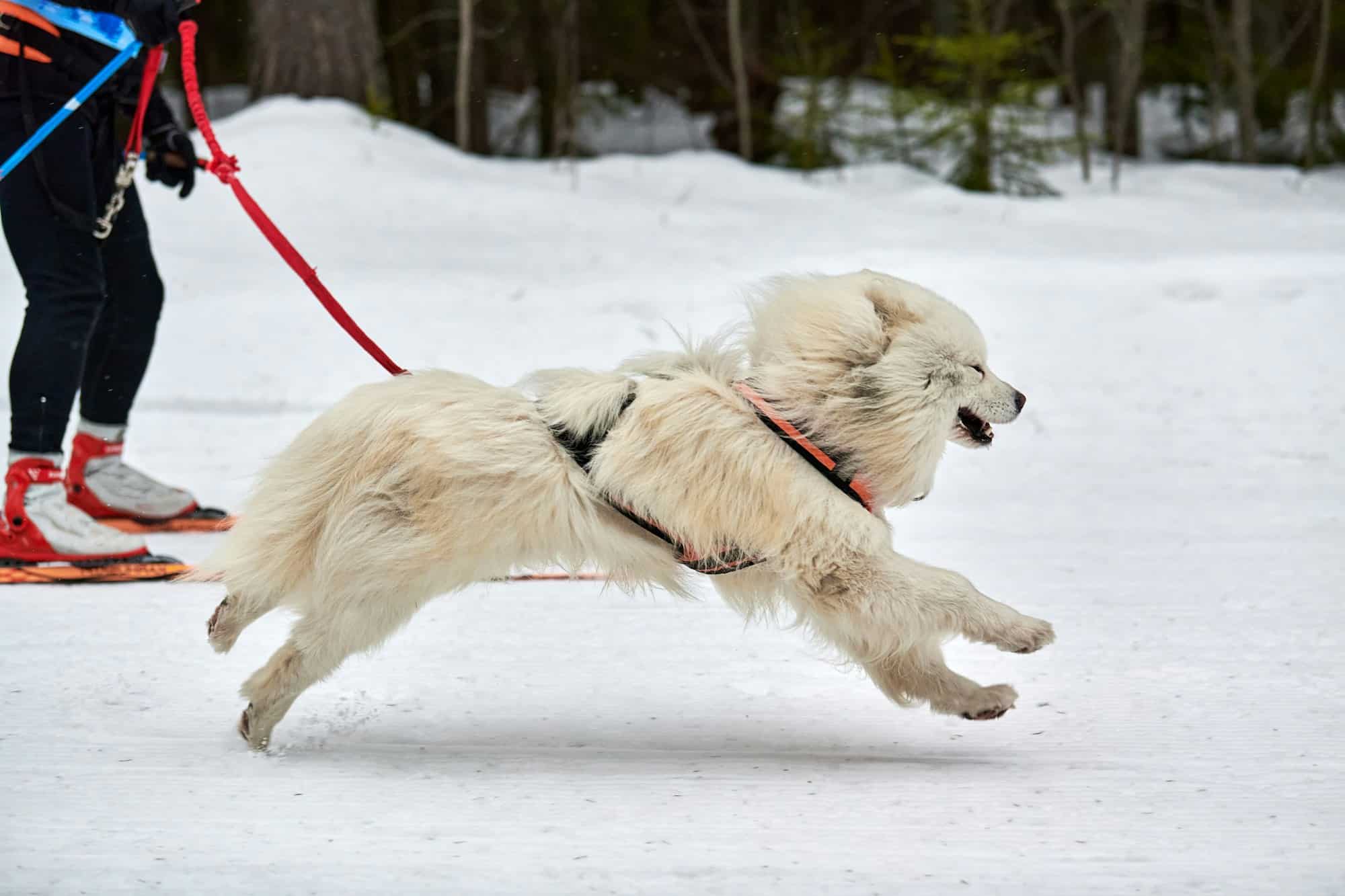What’s the Best Way to Introduce a Dog to Cold Weather Activities Like Skijoring?

When it comes to winter activities with your dog, you’ll find a myriad of options to keep both you and your furry friend active. One such activity, capturing the interest of dog owners worldwide, is skijoring. This dog-pulling, cross-country skiing hybrid is a fun, winter exercise that can be quite the adventure for both you and your pet. So, how to make this transition to cold weather activities like skijoring easy for your dog? Let’s explore some useful tips and considerations.
Understanding Dog’s Perception of Cold Weather
Before diving into the details of skijoring, it’s important to understand how dogs perceive the cold weather. Not all dogs are created equal when it comes to withstanding winter conditions. Factors like breed, age, health, and coat type play a significant role in how well a dog can tolerate cold temperatures.
A lire aussi : What’s the Most Efficient Method for Dealing with Excessive Shedding in Huskies?
Dogs with thick coats, like Huskies or Bernese Mountain dogs, are naturally equipped to handle freezing conditions. On the other hand, breeds with short or thin coats, like Greyhounds or Chihuahuas, may struggle in the cold. Age and health can also affect a dog’s tolerance to cold. Puppies, elderly dogs, and those with health conditions are more susceptible to cold weather risks.
Introducing Your Dog to Cold Weather
It’s not unusual for dogs to feel apprehensive about stepping out into the snow for the first time. Introducing your dog to cold weather activities should be a gradual process. Start by letting your pet explore the snow in your backyard or a nearby park. Ensure they have a warm place to retreat if they start showing signs of discomfort.
A lire en complément : What Are the Most Effective Techniques for Training a Cat to Stay Off the Counters?
Keep an eye out for symptoms of hypothermia, such as shivering, lethargy, and frostbite signs like skin discoloration. If your dog seems distressed, it’s time to head back indoors. Gradual exposure will help your pet adjust to the cold temperatures more easily.
Overview of Skijoring
Skijoring is a winter sport where a person on skis is pulled by a dog (or dogs). It’s an exciting activity that will provide plenty of exercise for both you and your pet. Skijoring originated in Norway and has been gaining popularity in North America and other parts of Europe.
To get started with skijoring, you’ll need some equipment. A skijoring belt for the human, a harness for your dog, and a towline to connect you both. It’s crucial to find equipment that fits well and is comfortable for both you and your pet.
Preparing Your Dog for Skijoring
Before your first skijoring adventure, your dog must have basic obedience training. Commands such as ‘left’, ‘right’, ‘straight’, ‘slow’, and ‘stop’ are essential for a safe and enjoyable skijoring experience.
Your dog should also be in good physical condition. Skijoring is a strenuous activity, and your dog should be able to handle the exercise. It’s recommended to have a vet check-up before starting any new sport to ensure your pet is healthy and fit for the activity.
Starting with short, easy runs and gradually increasing the distance and speed will help your dog adapt to the activity. Always monitor your dog’s behavior and comfort level during and after skijoring. Make sure they are enjoying the activity and not showing signs of fatigue or discomfort.
Keeping Your Dog Safe and Comfortable in Winter
While enjoying cold weather activities like skijoring, keeping your dog safe and comfortable is crucial. Provide your pet with a warm coat and booties to protect them from the cold, especially if they have a thin coat or are sensitive to cold temperatures.
Always check your dog’s paws for signs of frostbite or ice accumulation between the toes. After returning from the snow, clean your dog’s paws and dry them thoroughly.
Hydration and nutrition are also essential. Dogs burn more calories in winter to keep warm, so they may need more food. Always carry water for your dog during skijoring, as eating snow can lower your pet’s body temperature and is not a reliable source of hydration.
Remember, every dog is unique, and what works for one might not work for another. Pay close attention to your dog’s needs and behaviors when introducing them to cold weather activities. With patient training and proper care, you’ll find skijoring a rewarding winter activity to enjoy with your furry friend.
Skijoring Training for Dogs: The Basics and Beyond
Skijoring can offer both physical and mental stimulation for dogs. Nevertheless, before embarking on this winter activity, your dog will require some basic training to ensure their safety and success.
This cross-country skiing sport involves your dog pulling you on skis, and hence, the name ‘skijoring’ – a word of Norwegian origin that means ‘ski driving.’ It’s an engaging winter sport that requires a strong connection and understanding between you and your furry friend.
For dog skijoring training, start by familiarizing your pet with the harness and towline. Let them wear these in a comfortable environment first. These are the essential pieces of equipment that connect you and your dog during skijoring. A well-fitting harness is crucial; it should distribute pulling force evenly across your dog’s body to avoid discomfort or injury.
Train your dog to respond to directional commands. As mentioned previously, commands such as ‘left’, ‘right’, ‘straight’, ‘slow’, and ‘stop’ are vital for a safe skijoring experience. Practice these commands in a familiar setting, like a dog park, before hitting the snowy trails.
Remember, not all dog breeds are suitable for skijoring. Breeds known for their pulling abilities like Alaskan Malamutes, Siberian Huskies, and Samoyeds are often good candidates. However, with the right training and care, many breeds can enjoy this winter sport.
Importance of Aftercare Following Cold Weather Activities
After enjoying winter activities such as skijoring, it’s important to take proper care of your furry companion to ensure their health and comfort. This can be as simple as a check-over to look for any signs of injury or discomfort, to more involved care like warming them up and providing a nutritious meal.
Once you finish your skijoring session, inspect your dog for any signs of cold-weather injuries like frostbite, especially on their ears, tail, and paws. Check for ice accumulation between their toes and gently remove any that you find. Use lukewarm water to clean their paws and dry them thoroughly before heading back indoors to avoid any discomfort or irritation.
Hydration and nutrition are just as important after the activity as they are beforehand. Have fresh water ready for your dog when you finish your winter sports session; it encourages them to drink and helps prevent dehydration.
Since skijoring and other winter activities can be quite strenuous, your dog might need more food than usual to replenish lost energy. A quality meal after a skijoring session can help your dog recover faster and keep them healthy.
Whether it’s skijoring or any other winter dog activity, the key is to keep your dog safe and comfortable. By introducing your dog gradually to the cold weather, equipping them with the right gear, and providing the right training, you can enjoy a host of winter activities with your furry friend. It’s an excellent way for both of you to stay active during the winter months and can also strengthen the bond you share with your dog. As always, it’s essential to pay attention to your dog’s needs and behaviors during these activities to ensure they are enjoying the experience and are not uncomfortable or overly tired.
